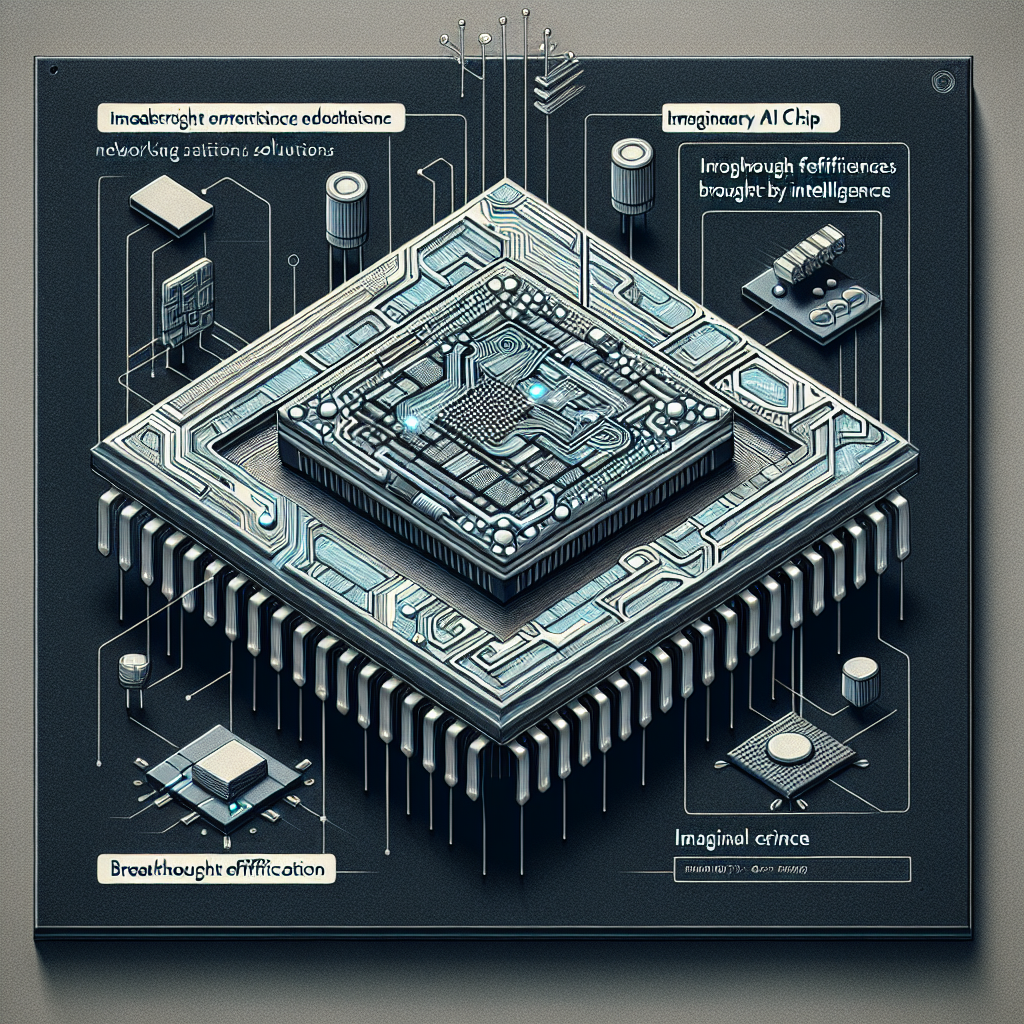-
AI Arms Race Sends Applied Digital Soaring 25% on $11B CoreWeave Deal

The ongoing AI arms race has ignited renewed investor interest in Applied Digital (NASDAQ:APLD), which recently reported an impressive first-quarter performance that significantly surpassed Wall Street expectations. The company reported a staggering year-over-year revenue increase of 84%, amounting to $64.2 million—well above the projected figure of $50 million by analysts. This surge in revenue, alongside a smaller-than-anticipated adjusted loss of 3 cents per share, emphasizes Applied Digital’s increasing operational leverage as it capitalizes on the rapidly advancing landscape of generative AI technologies.
As a result of this stellar performance, shares of Applied Digital surged by 25% in premarket trading last Friday. This price jump reflects growing investor recognition of the company as a critical enabler of high-performance AI computing infrastructure. The boost in stock value highlights a fundamental shift in perception: investors are no longer viewing Applied Digital merely as a hosting provider, but rather as a foundational player in the AI infrastructure domain, poised to capitalize on the surging demand for AI capabilities.
The company’s strategic expansion efforts are significantly bolstered by its deep partnership with CoreWeave (NASDAQ:CRWV). In a move that underscores its long-term vision, Applied Digital secured an additional 150 megawatt (MW) lease in North Dakota in August, contributing to a projected total lease revenue of approximately $11 billion. This figure includes $7 billion sourced from two earlier signed 15-year deals this year. Such partnerships not only reinforce the company’s operational capacity but also position it as a leader in providing critical infrastructure for AI-focused enterprises.
During the June-to-August reporting period, Applied Digital’s data center hosting segment generated a notable $37.9 million, showcasing a remarkable acceleration in enterprise demand for large-scale compute capacity—an essential requirement for companies diving into AI-driven solutions. Roth Capital suggested that Applied Digital could secure another high-performance computing colocation agreement before the year ends, which would further highlight their burgeoning influence in the AI infrastructure market.
Despite facing a significant 144% hike in its cost of revenues, which soared to $55.6 million primarily due to substantial facility buildouts, Applied Digital remains strategically positioned to capture the upcoming surge in AI-driven data demand. This proactive approach to scaling operations indicates a robust commitment to meeting the anticipated needs of enterprises eager to harness the power of artificial intelligence.
In essence, Applied Digital’s recent performance and strategic initiatives underscore a pivotal moment in the company’s trajectory. With substantial backing from partnerships like that with CoreWeave, and an upward trend in AI demand, Applied Digital is not only enhancing its operational framework but also signaling to the market that it intends to be a vital player in the expanding AI ecosystem. Investors and analysts alike are watching closely, realizing that the company’s evolving role could offer lucrative opportunities in the ever-competitive AI landscape.
As the arms race in AI technology advances, the ramifications for companies like Applied Digital are profound. The narrative is one of opportunity and growth—demonstrating how firms that strategically invest in infrastructure can reap substantial rewards in a domain characterized by rapid innovation and increasing reliance on AI solutions. As this sector develops, stakeholders may find that Applied Digital’s commitment to excellence and strategic foresight positions it favorably for sustained success amidst the AI revolution.
-
Cisco and Microsoft deepen partnership for meetings, AI

In a significant development, Cisco and Microsoft have announced a deeper partnership aimed at optimizing meeting room experiences through advanced technologies. This collaboration comes at a time when businesses increasingly prioritize seamless, efficient communication tools to facilitate remote and hybrid work environments.
At Cisco’s recent WebexOne partner and customer conference, Brady Freese, the lead AV infrastructure engineer at Lowe’s, shared insights about the transformation of meeting spaces in their newly built 25-story tech lab in Charlotte, North Carolina. Faced with the challenge of managing complex meeting room setups, Lowe’s leadership sought Freese’s expertise to simplify the configuration and enhance the overall meeting experience for employees.
One noteworthy change involved consolidating equipment down to two primary devices: a touch panel installed on the conference table and a Room Bar Pro mounted on the wall. This strategic move didn’t just streamline the deployment process; it also significantly improved how meetings were conducted across the company.
As Freese pointed out, Lowe’s previously complicated meeting rooms required specialized expertise for installation, often taking up to a week to set up. However, with the implementation of simplified hardware coupled with Cisco’s Webex Control Hub management portal, the company has seen remarkable efficiency improvements. “We’ve gone from installing a room in about a week or so to deploying three to four rooms a day,” said Freese, showcasing the tangible benefits of this streamlined approach.
Furthermore, the partnership between Cisco and Microsoft will further enhance the meeting room deployment experience. Cisco has indicated plans to integrate its devices natively with Microsoft Teams Rooms, allowing for a more cohesive application interface. This integration is powered by the Microsoft Device Ecosystem Platform (MDEP), a framework designed for manufacturers building Teams-certified hardware.
Alan McCann, director of software engineering at Cisco, emphasized that customers could expect a boost in security and functionality thanks to MDEP updates, alongside Cisco’s established security and remote management capabilities. This alignment highlights a growing trend among tech vendors—the push towards interoperability between different collaboration systems.
Jeetu Patel, Cisco’s President and Chief Product Officer, commented on the shift away from the prolonged era of ‘walled gardens’ that offered little to no room for compatibility between various services. “If you have different collaboration products, they should actually integrate with each other,” he remarked, indicating a commitment to fostering an open ecosystem that protects and nurtures customer investments.
The synergy between Cisco and Microsoft doesn’t end with meeting rooms. Cisco’s similar partnership with Zoom, which includes an application for enabling native Zoom meetings on Cisco’s RoomOS, illustrates this broader industry movement towards unified communication platforms which seamlessly connect disparate systems.
In summary, the strengthened collaboration between Cisco and Microsoft is set to not only simplify the logistics of setting up meeting rooms but also pave the way for enhanced security and productivity. As businesses continue to adapt to the changing work landscape, having versatile, reliable, and easily integrated meeting solutions will be essential for maximizing collaboration and innovation.
For those looking to stay informed about advancements in collaborative technologies and the implications for business operations, this partnership between two tech giants could serve as a vital case study. The evolution of meeting room technology is indicative of the broader shifts toward agility and efficiency in how workspaces are designed and utilized, making it an exciting time for businesses ready to invest in modern communication solutions.
-
IBM Spyre Accelerator: Low-Latency Inference for Generative and Agentic AI on IBM Z, LinuxONE, and Power

IBM has unveiled the Spyre Accelerator, a cutting-edge low-latency inference engine, set to revolutionize how enterprises implement generative and agentic AI solutions. Available starting October 28 for the IBM z17 and LinuxONE 5 platforms, with Power 11 access to follow in December, this innovative offering emphasizes the necessity for responsiveness and security in enterprise AI applications.
The Spyre Accelerator is engineered for businesses aiming to integrate AI into existing systems without compromising sensitive data. By permitting the retention of data on-platform, Spyre circumvents common pitfalls associated with data egress and external processing, thereby minimizing compliance risks and enhancing data security. The device comes as a 5nm, 32-core system-on-a-chip (SoC) that fits into a 75-watt PCIe card, allowing for a streamlined deployment and enhancing infrastructure efficiency.
IBM supports an expansive scale-out configuration of up to 48 Spyre cards in either an IBM Z or LinuxONE system, and up to 16 cards per IBM Power system. This design facilitates concurrent model inference, ideally situated alongside transactional workloads such as fraud detection and retail automation, allowing enterprises to leverage agentic AI systems effectively.
From Logic Pipelines to Agentic AI
As businesses evolve, the shift from deterministic logic chains to agentic AI is becoming increasingly apparent. Agentic AI systems are characterized by their ability to perceive context, plan, and act in real-time, necessitating very low-latency inference capabilities. The introduction of the Spyre Accelerator aligns perfectly with this evolution, providing a predictable quality of service that maintains high transaction volumes while processing complex AI tasks.
By incorporating dedicated inference hardware directly on legacy platforms where critical data is stored, IBM drastically reduces the risk associated with data transfer. The Spyre technology maintains local data integrity and security, permitting rapid real-time decision-making without latency issues often introduced by backhauling data across networks.
Spyre’s architecture incorporates advanced engineering inspired by IBM Research’s prototypes. The system is not only optimized for low-latency inference but is also designed to work compatibly with the existing enterprise software stack, facilitating seamless integration into various business workflows.
Spyre Architecture
The architecting of Spyre represents a monumental stride in AI efficiency. With 25.6 billion transistors packed into its 32 accelerator cores, it is purpose-built for real-time inference rather than model training. The easily deployable PCIe card form factor resonates with IT teams accustomed to traditional deployment models, ensuring faster implementation cycles.
In addition to interoperability with IBM’s security and observability frameworks, Spyre introduces enhanced capabilities for model serving. Its combination with the Power system enhances operational agility by providing a one-click catalog for rapid service deployment, streamlining the path from ideation to operational embedding of AI solutions.
IBM’s ambition with Spyre is to introduce AI-driven methodologies throughout organizations’ OLTP, batch processing, and messaging flows without adversely affecting existing throughput or service levels. By bridging the gap between AI capabilities and foundational data requirements, IBM enables enterprises to harness significant competitive advantages.
Commercial Implications
The Spyre Accelerator’s focus on energy efficiency, data locality, and enterprise performance unfolds exciting commercial potentials for organizations looking to upgrade their AI infrastructures. As enterprises increasingly adopt AI to automate intricate processes and improve decision-making, the availability of a robust, low-latency inference engine will likely empower a new wave of AI-driven applications.
In conclusion, the introduction of the IBM Spyre Accelerator marks a significant advancement in the realm of enterprise AI deployments, offering organizations the tools necessary to integrate sophisticated AI operations while ensuring the security and efficiency of their critical data environments.
-
(PR) Intel Unveils Panther Lake Architecture: First AI PC Platform Built on 18A

In a bold move to revolutionize the computing landscape, Intel has unveiled its Panther Lake architecture, heralding a new era in artificial intelligence-powered personal computing. This announcement comes alongside the introduction of the Intel Core Ultra series 3 processors, which set to capitalize on cutting-edge 18A semiconductor technology—the most advanced process ever developed and manufactured in the United States.
Panther Lake represents a significant advancement in both performance and efficiency for Intel’s client processors. Featuring up to 16 performance cores (P-cores) and efficient cores (E-cores), it promises more than a 50% increase in CPU performance compared to its predecessor. Additionally, users can expect an astounding uplift in graphics performance through the inclusion of the new Intel Arc GPU, which carries up to 12 Xe cores, designed specifically for high-intensity graphical applications.
The architecture also prioritizes artificial intelligence acceleration through a balanced XPU design that can achieve up to 180 TOPS (trillions of operations per second). This potent combination of computational and graphical prowess positions Panther Lake as an invaluable asset across various sectors, including consumer electronics, gaming devices, and edge computing solutions.
Central to the Panther Lake architecture are several groundbreaking technologies set to redefine efficiency standards in the computing industry. The introduction of RibbonFET represents Intel’s first new transistor architecture in over a decade, facilitating greater scalability and reducing energy consumption through efficient switching mechanisms. Moreover, the innovative PowerVia technology offers enhanced power flow and signal delivery, ensuring optimal functionality in a compact design.
Intel’s commitment to American manufacturing stands solidly behind the Panther Lake architecture, with both the Panther Lake and its server counterpart, Clearwater Forest, set to be produced at Fab 52 in Chandler, Arizona. This strategic move symbolizes Intel’s dedication to advancing domestic technology, manufacturing resilience, and maintaining a reliable semiconductor supply chain.
Intel CEO Lip-Bu Tan emphasized the importance of this milestone, stating, “We are entering an exciting new era of computing, made possible by great leaps forward in semiconductor technology that will shape the future for decades to come.” The implications are clear: Panther Lake’s capabilities will act as catalysts for innovation, not just within Intel’s own operations, but across a wide array of sectors reliant on high-performance computing.
A notable feature of the Panther Lake architecture is its scalable, multi-chiplet design, which provides unparalleled flexibility for business partners. Whether targeting budget-friendly options or high-end gaming solutions, this architecture accommodates various form factors and market segments effectively.
The Panther Lake platform is also set to extend its influence beyond conventional personal computing. Applications in the field of robotics are particularly noteworthy, with Intel developing a dedicated Robotic AI software suite and reference board aimed at allowing consumers and businesses to harness the power of AI in real-time from edge devices.
As the Panther Lake architecture gears up for release later this year, tech enthusiasts and industry leaders alike are keenly observing its development. The anticipated gains in performance metrics, coupled with power efficiency improvements, make this an exciting venture for Intel as it positions itself at the forefront of future computing technology. This strategic initiative aligns with broader industry trends towards edge computing and AI integration, highlighting Intel’s efforts to remain competitive during a rapidly evolving technological landscape.
In conclusion, Intel’s Panther Lake architecture signifies not merely an upgrade but a transformative leap in personal and commercial computing. By leveraging advanced technology alongside a robust manufacturing strategy, Intel is setting a new benchmark in AI capabilities—a move that not only benefits consumers but also significantly enhances the operational toolkit available to businesses and investors alike.
-
Real reviews, not robots: Irish start-up Marker Video takes on AI ads

In the rapidly evolving landscape of digital marketing, genuine consumer engagement has become a vital asset for brands. Enter Marker Video, an innovative start-up founded by Greta Dunne, that provides a refreshing take on content creation. Rather than relying on scripted ads or the often unverifiable authenticity of influencers, Marker Video taps into the power of real, unfiltered consumer reviews in the form of short product videos. This unique content marketplace allows consumers to share their honest experiences with the products they use daily, transforming everyday items into compelling marketing tools.
The importance of authentic content in advertising cannot be overstated. With consumers increasingly skeptical of traditional ads that seem disingenuous, Marker Video offers a compelling alternative. “Brands need authentic, trustworthy content at scale as consumers have become sceptical about scripted ads and inauthentic content pretending to be genuine,” Dunne explains. This insight is the driving force behind her venture, aiming to bridge the gap between brands and the everyday consumer through relatable video content.
Marker Video operates on a simple yet effective economic model. Brands can purchase user-generated videos for various marketing channels including social media, websites, email campaigns, and YouTube shorts, eliminating the tedious negotiation processes that often dominate influencer marketing. Instead, companies can buy videos individually or in bulk at competitive rates. For instance, a single video costs €200, with the reviewer receiving €100, making it a win-win scenario for both parties. This pricing structure significantly undercuts traditional influencer costs, which can soar into the thousands.
Moreover, Marker Video is set to launch a premium membership model that elevates the value proposition even further. With a monthly fee of €120, businesses gain additional visibility through logo placement on the brand page and the ability to track engagement via a unique QR code. New members receive a substantial 50% discount on all video purchases for the first year, incentivizing businesses to explore authentic marketing avenues.
The marketplace operates with a two-way approach: brands can request specific videos, or Marker Video can proactively suggest content that aligns with a brand’s marketing goals. This flexibility will attract a diverse clientele, including sectors such as beauty and cosmetics, hospitality, food and beverage, and retail.
Dunne’s journey to establish Marker Video began in 2023 and has been shaped by a complex operational framework designed to validate and authenticate the content shared on the platform. By ensuring that the videos reflect genuine consumer experiences, Marker Video stands to gain a reputation as a trustworthy resource for brands seeking fresh, authentic promotional material.
From a practical business standpoint, Marker Video aligns sharply with the current market demands for authenticity. In a world where consumers have grown disillusioned by polished promotional campaigns that often lack substance, Marker Video presents a viable alternative that prioritizes real consumer voice. The start-up is poised to respond to this demand, making its service particularly relevant in today’s advertising climate.
With the rise of social media, brands face the challenge of not only reaching their target audience but also building trust and authenticity. As Greta Dunne aptly puts it, “consumers are tired of scripted ads.” Marker Video’s model harnesses the power of genuine reviews offering a cost-effective solution that could become a staple in modern advertising strategies.
In conclusion, Marker Video is carving out its niche in the future of advertising, where authenticity prevails. By empowering everyday consumers to share their real-life experiences in a structured marketplace, brands can reconnect with their audience on a deeper level, ultimately enhancing customer loyalty and resulting in tangible business value.
-
Cisco Silicon One touts efficiency breakthrough with AI chip

The tech world is buzzing with excitement as Cisco launches an innovative new chip that’s poised to revolutionize networking infrastructure. The Cisco Silicon One P200, introduced alongside a new series of routers, is particularly significant for hyperscaler customers, such as Alibaba and Microsoft Azure. This move marks a considerable advancement in the integration of AI capabilities into networking technology, demonstrating Cisco’s commitment to remaining at the forefront of the digital transformation in enterprise environments.
Originally launched in 2019, the Cisco Silicon One architecture has already shown promising versatility, providing a robust framework that can be utilized across various roles within data centers. The P200 chip encapsulates this vision, emerging as a high-performance networking chip that combines efficiency with unprecedented power. Historically, networking chips have faced limitations regarding scalability and power consumption, especially in AI applications. Cisco’s announcement signals a potential turning point in overcoming these hurdles.
At its core, the P200 chip boasts an impressive capability—consolidating the processing power typical of 92 previous chips into a single unit. This miniaturization not only enhances performance but also leads to a significant 65% reduction in power consumption for the 8223 routing system. As data centers continue to face escalating demands for GPU-based compute power, the need for efficient solutions becomes critical, particularly for organizations expanding their AI workloads.
Industry analysts, such as Sameh Boujelbene from Dell’Oro Group, highlight that a primary challenge in scaling AI applications is tied to power limitations. For hyperscalers, the ability to spread the AI workload across multiple data centers and even cities is paramount. The new Silicon One P200 chip is engineered to facilitate just that by supporting distributed AI infrastructure and optimizing performance, thereby addressing one of the industry’s most pressing challenges.
Competition in the high-performance networking chip market is fierce, particularly with Nvidia introducing its Spectrum-XGS Ethernet platform aimed at similarly scaling AI networks. While Nvidia’s offering integrates its own proprietary technology for efficient data management and connectivity, Cisco distinguishes itself with the holistic design of its Silicon One product line, which integrates routing and switching capabilities in a unified framework. This allows for enhanced power efficiency, paving the way for future innovations.
As further evidence of its prowess in the networking arena, Cisco emphasizes that its AI networking systems provide not just silicon efficiency but also extensive capabilities across software and hardware. In a modern landscape where AI applications are increasingly demanding, optimizing bandwidth and routing efficiency can greatly impact operational costs and service delivery.
Moreover, innovations like the P200 chip underscore the growing interconnectedness of AI and networking technologies, illustrating the urgent need for businesses to adopt more sophisticated frameworks. As the digital economy surges forward, having the requisite infrastructure to support advanced AI applications will be crucial for competitive positioning.
Cisco’s release of the Silicon One P200 is more than just another iteration in their product lineup; it represents a significant leap toward addressing the complexities of enterprise AI infrastructure. As businesses increasingly leverage AI across their operations, the importance of scalable, efficient, and powerful networking becomes ever more apparent. With initial deployments in hyperscaler environments, it won’t be long before the broader implications of this technology are realized, potentially setting new standards for performance and efficiency in the industry.
-
AI-Power Boom to Drive $1.1 Trillion in US Utility Grid Spending

The landscape of the US energy sector is rapidly evolving, fueled by a surge in demand driven by technological advancements, most notably artificial intelligence. According to the Edison Electric Institute, US electric companies are projected to invest a staggering $1.1 trillion in power grid infrastructure over the next five years, with nearly $208 billion earmarked for 2025 alone. This significant rise in utility spending underscores the critical need for modernizing the electric grid to support a multitude of sectors, particularly data centers and the broader shift towards a more electrified economy.
To provide context, the recent data reveals that investor-owned utilities made capital expenditures totaling $765 billion in the five years leading up to the end of 2024. The forthcoming investments represent a remarkable increase, highlighting the urgency of scaling infrastructure to support not only existing demand but also the anticipated growth stemming from advancements in AI technology. Such a massive financial commitment signals a turning point for the industry, as companies recognize the need to adapt their operations to meet the evolving demands of a tech-driven landscape.
Deteriorating power infrastructure poses significant challenges to businesses across the United States. David Weeks, the supply chain industry practice lead at Moody’s, emphasized the growing strain on the power grid. He noted that the escalating energy crisis could act as a constraining factor for various industries, compelling organizations to rethink their supply chains and operational strategies. Businesses, especially those heavily reliant on consistent energy supply, must now factor in potential power grid limitations and permitting delays, which could impact their productivity and bottom lines.
Key sectors such as healthcare, finance, and tech are already feeling the pressure from power supply issues; therefore, proactive measures are critical to ensuring that their operations remain uninterrupted. Utility companies are not only tasked with the immediate goal of upgrading existing infrastructure but also the long-term challenge of anticipating future demand. This shift will require innovative approaches to energy management, emphasizing the importance of integrating renewable energy sources and improving efficiencies within the grid.
The financial implications of the US utility investment are far-reaching. In addition to enhancing operational efficiency and reliability, these expenditures represent potential business opportunities for various stakeholders, including investors, technology firms, and infrastructure developers. With billions of dollars flowing into the energy sector, businesses looking to innovate within this space will find a fertile ground for development, particularly in areas related to energy efficiency, storage solutions, and the integration of smart technology.
Moreover, advancements in artificial intelligence could play a crucial role in optimizing energy distribution and consumption. With AI-driven solutions, utility companies can better predict demand patterns, manage resources, and maintain grid stability. Companies leveraging AI technologies may find themselves at the forefront of a revolution that not only addresses the immediate needs of the power grid but also prepares them for a sustainable future in energy consumption. The successful implementation of these strategies could be the key driver behind the transformation of the US energy landscape.
In conclusion, the projected $1.1 trillion investment in the US utility grid represents a significant milestone in addressing the challenges posed by modern demands for energy. As the nation shifts towards a more electrified economy, the importance of upgrading and enhancing infrastructure cannot be overstated. For businesses, particularly those in technology and data-centric industries, understanding and adapting to the evolving energy landscape will be crucial for sustaining growth and navigating future challenges. The intersection of artificial intelligence and energy management will likely define the next chapter in the US power grid’s evolution, making it imperative for stakeholders to stay informed and engaged.
-
Adding human guidance to AI tutors enhances benefits for students, study finds

The integration of human guidance into AI tutoring systems presents a promising approach to enhance educational outcomes, as detailed in a recent study conducted by researchers from Carnegie Mellon University, the University of Hong Kong, and Stanford University. This research highlights how leveraging both human and artificial intelligence can significantly improve student performance, particularly in a classroom setting where the personalized interaction of human tutors is blended with the systematic and adaptive capabilities of AI tutors.
The study underlines a critical gap in traditional educational practices where human tutoring has been recognized for its effectiveness but suffers from high costs and scalability issues. In contrast, AI tutors offer a scalable solution, albeit with varying degrees of effectiveness in addressing students’ diverse academic needs. By evaluating a year-long virtual human-AI tutoring program, the researchers found that students paired with both AI and human tutors outperformed those who received solely AI tutoring.
One of the key findings of this research is elucidated by Lee Branstetter, a professor of economics at Carnegie Mellon, who emphasizes the cumulative benefits of human involvement in tutoring. As students engage more over time, their learning progress becomes increasingly pronounced, illustrating how time-on-task can serve as a vital metric for gauging educational effectiveness and identifying students requiring additional support.
The study, which spans over academic performance data from over 350 seventh-grade students, indicates that high-impact human tutoring—characterized by personalized instruction and motivation—combined with the adaptive features of AI tutors, creates an enriched learning environment. This collaboration aims not only to replicate the benefits of traditional tutoring but also to tap into the scalability that AI offers, thus making quality education more accessible.
High-quality human tutoring typically involves structured instructions delivered in small groups or one-on-one settings, thus directly addressing specific learning goals and enhancing overall student engagement. Nonetheless, the high costs associated with hiring human tutors have motivated educational researchers to find effective means to reproduce similar advantages through technological innovations. The current study builds upon this foundational idea, showcasing how human-AI tutoring can indeed serve as a viable alternative.
Jordan Gutterman, a graduate student at Carnegie Mellon who coauthored the study, described these findings as a validation of the collaborative potential between AI systems and human educators. His excitement underscores the real-world implications of the research, as substantial improvements observed within classrooms over an entire school year signal hopeful advancements in the educational landscape.
The comparative assessment conducted in this study, which looked at students during the 2023-2024 academic year against those who previously participated in AI-only tutoring, emphasizes the progressive role of human-AI collaboration in modern education. By merging the strength of human cognitive ability and emotional intelligence with AI’s analytical proficiency, this approach draws closer to fulfilling the educational outcomes traditionally associated with personal tutoring.
In light of the findings, these insights can be instructive for educational institutions, policymakers, and investors interested in the intersection of technology and education. The implications are clear: institutions looking to leverage AI systems for improved educational outcomes may benefit significantly from incorporating human oversight into their tutoring frameworks.
Ultimately, as AI technologies continue to evolve and their applications broaden, embracing an approach that combines human insight with automated systems could lead to more effective educational practices. The collaborative model proposed in this study not only has the potential to reshape educational paradigms but also paves the way for innovations in teaching methodologies that can make learning more engaging, personalized, and effective for students around the world.
-
Navatar Brings AI-Powered Private Credit CRM on Salesforce Amid $30 Trillion Market Boom

In a groundbreaking move, Navatar has launched a next-generation, AI-powered CRM platform specifically designed for private credit firms, coinciding with the predicted growth of the private credit market to an astonishing $30 trillion, according to the 2025 Private Credit Outlook by Wellington Management. This innovative cloud-based solution aims to revolutionize how private credit firms manage their operations, particularly in the areas of underwriting, monitoring, and engaging with investors.
The private credit landscape is evolving rapidly, currently reshaping global finance as it spans across traditional public markets and innovative specialty finance strategies for venture-backed companies. This expansion necessitates a robust approach to handling extensive volumes of data, which includes borrower information, financial covenants, and various market signals. However, many firms are still bogged down by outdated legacy CRMs and cumbersome spreadsheets, resulting in data being siloed within emails, notes from calls, and scattered deal documents.
Navatar’s AI-driven platform directly addresses these challenges. By capturing essential information from diverse sources such as Outlook, LinkedIn, and Slack, as well as from call notes and third-party data, the system enables automatic multi-tagging of all pertinent entities, including individuals, organizations, deals, and sectors. This data harmonization transforms previously isolated information into structured, actionable intelligence that the AI can efficiently analyze and leverage.
Key functionalities of the new platform include deal sourcing and market scanning where AI algorithms identify high-potential borrowing opportunities, scrutinize sponsor pipelines, and keep tabs on venture-backed companies pivoting towards private credit. Furthermore, during the underwriting and credit analysis phase, the AI tool is capable of extracting crucial terms, covenants, and risk factors from Confidential Information Memorandums (CIMs), loan contracts, and due diligence documents while predictive models evaluate pricing and default risk.
The platform also features a predictive scoring system that ranks opportunities based on their likelihood of approval and alignment with the firm’s strategic objectives. With automated task management, AI not only streamlines follow-up procedures but also replicates workflows triggered by key milestones in deals or borrower activities, thus enhancing operational efficiency. Finally, investor and bank collaboration processes are simplified as the platform automates updates to limited partners and facilitates seamless coordination with banking partners.
Unlike traditional CRMs, which often require expensive customizations and experience low user adoption rates, Navatar’s CRM is specifically tailored for the unique needs of private credit firms. It integrates built-in automation functionalities to eliminate the headache of manual data entry, ensures efficient multi-tagging for borrowers, sponsors, facilities, and counterparties, and embeds AI into the workflow across various functions.
As the private credit sector continues to grow, the demand for sophisticated tools that leverage artificial intelligence is more pressing than ever. Navatar stands poised to lead this transformation, not merely by providing a software solution but by redefining how private credit firms operate—truly a game changer in an evolving market landscape. The anticipated advancements through this AI-powered platform not only promise increased efficiency but also aim to enhance the overall quality of decision-making processes within firms.
In summary, the launch of Navatar’s AI-driven CRM represents a significant technological advancement in the private credit industry, reflective of the broader trends toward automation and data intelligence. With the ongoing shift in global finance dynamics, firms equipped with such innovative tools are likely to gain a competitive edge in this burgeoning $30 trillion market.
-
Scientists use AI to sustainably transform livestock waste into fertilizer

As global agricultural demands continue to rise, scientists are increasingly turning to innovative methods like artificial intelligence to address pressing environmental concerns associated with livestock waste. A groundbreaking study conducted by Xiaofei Ge and a team from China Agricultural University has demonstrated the potential for machine learning to revolutionize the management of animal waste. The research focuses on predicting the fate of phosphorus—a critical yet potentially hazardous nutrient—derived from swine manure, a common byproduct in livestock farming.
The challenge of manure management has long plagued the agricultural sector. The sheer volume of waste produced can lead to significant environmental degradation and health risks if not handled responsibly. However, animal manure is also rich in valuable nutrients such as nitrogen, phosphorus, and carbon, essential for soil health and crop production. The key lies in effectively reclaiming these nutrients without exacerbating pollution problems.
Phosphorus is dual-faceted; it plays a critical role in plant growth but poses environmental threats when mishandled. Excess phosphorus in water bodies can trigger harmful algal blooms that deplete oxygen and endanger aquatic life. In the words of Ge, “Livestock manure contains massive amounts of phosphorus that are a blessing and a curse.” This duality underscores the necessity for sustainable practices that could transform waste into renewable resources.
The study investigates hydrothermal treatment—an energy-intensive procedure that treats moist biomass under pressure—to convert swine manure into two distinct products: hydrochar, a nutrient-rich solid, and a liquid byproduct. Unlike traditional composting or drying methods, hydrothermal treatment simplifies processing as it eliminates pre-drying needs and enhances nutrient retention. However, it has historically been difficult to determine how phosphorus is distributed between the solid and liquid phases during this treatment.
To unravel this complexity, Ge’s team employed three advanced machine learning models—XGBoost, Decision Tree, and Random Forest—to predict phosphorus distribution under varying treatment conditions. The researchers compiled a rich dataset comprising 423 experimental results from earlier studies, supplemented by 32 new trials they conducted. These experiments examined a variety of factors, including reaction temperature, treatment duration, pH levels, and concentrations of iron and calcium ions.
The findings revealed that the XGBoost model emerged as the most effective predictive tool, demonstrating remarkable accuracy in forecasting phosphorus distribution, particularly in terms of inorganic phosphorus levels found in the liquid phase. This success signifies a substantial step forward, as it allows researchers and practitioners to optimize treatment conditions to maximize phosphorus recovery, thus avoiding the need for extensive laboratory testing.
The implications of this research extend beyond environmental health; they also resonate with the economic aspects of agriculture. By enabling more effective recycling of livestock waste, farmers could reduce reliance on synthetic fertilizers, leading to cost savings and sustainable practices that are increasingly demanded by consumers. The interplay between AI and sustainable farming not only addresses waste management challenges but also aligns with the broader movement towards environmentally responsible agricultural practices.
In conclusion, the integration of AI into livestock waste management represents a significant advancement in sustainable agriculture. The work of Xiaofei Ge and colleagues not only highlights the potential for turning a common pollutant into a valuable resource but also underscores a critical shift in how we approach agricultural sustainability. As this technology matures, it could pave the way for broader applications in managing agricultural byproducts, ultimately supporting both environmental integrity and economic viability in the farming sector.
